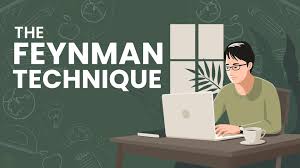How to Use the Feynman Technique to Master New Skills

Mastering new skills can often feel like a daunting task. Whether it’s learning a new language, picking up a musical instrument, or acquiring a professional competency, the journey from novice to expert requires a structured approach. One of the most effective methods to achieve mastery is the Feynman Technique, named after the Nobel Prize-winning physicist Richard Feynman. Renowned for his ability to simplify complex concepts, Feynman’s technique can be applied to skill acquisition, helping individuals break down intricate tasks into manageable steps. This guide outlines how to use the Feynman Technique to master new skills efficiently.
Step 1: Identify the Skill and Break It Down
The first step in mastering a new skill using the Feynman Technique is to clearly identify the skill you want to learn and break it down into its fundamental components. Understanding the basic elements of the skill is crucial as it provides a clear roadmap of what needs to be learned.
Example:
If you want to learn how to play the guitar, break it down into basic components such as understanding the instrument, learning chords, mastering strumming patterns, and reading music or tabs.
Step 2: Explain the Skill
Write down what you know about the skill in your own words. This step involves explaining the components of the skill as if you were teaching someone else. Use simple language and avoid technical jargon. The goal is to articulate your understanding clearly and concisely.
Example:
For learning guitar, you might start with:
“A guitar has six strings, each producing a different note. By pressing down on the strings at various points on the fretboard, you can change the pitch of the notes. Chords are combinations of notes played together, and strumming is the way you play the strings to produce sound.”
Step 3: Identify Gaps in Your Knowledge
As you attempt to explain the skill, you will naturally encounter areas where your understanding is incomplete. These gaps highlight what you need to focus on and study further. Recognizing these gaps is a critical step in the Feynman Technique as it directs your learning efforts more effectively.
Example:
While explaining guitar chords, you might realize you don’t fully understand how to transition smoothly between chords or how different strumming patterns affect the sound.
Step 4: Study to Fill the Gaps
Return to your resources—books, online tutorials, mentors, or practice exercises—to fill in the gaps in your knowledge. Focus on the areas you identified in the previous step, seeking to understand them thoroughly. This might involve repetitive practice, watching instructional videos, or seeking feedback from more experienced practitioners.
Example:
If you struggle with chord transitions, practice moving between a few basic chords repeatedly until you can do so smoothly. Watch videos on finger positioning and try to mimic the techniques demonstrated.
Step 5: Simplify Further
With the new information and practice, revisit your explanation and simplify it even more. The aim is to make your explanation as clear and straightforward as possible. By refining your understanding, you ensure that you have a firm grasp on the skill’s fundamentals.
Example:
“Playing the guitar involves pressing down on the strings at specific points to form chords and using your other hand to strum the strings in patterns. Practicing moving between chords and different strumming patterns helps make the transitions smooth and the music sound better.”
Step 6: Teach the Skill
One of the most effective ways to solidify your understanding and master a new skill is to teach it to someone else. Teaching forces you to clarify your thoughts and address any remaining gaps in your knowledge. Find a friend, family member, or even an imaginary student, and explain the skill to them, demonstrating where possible.
Example:
Teach a friend the basic chords on the guitar, showing them how to position their fingers and how to strum. Explain the importance of practice and demonstrate simple songs they can play using those chords.
Step 7: Reflect and Iterate
After teaching, reflect on the process. Were there any parts of your explanation that were unclear? Did your student have questions that you struggled to answer? Use this feedback to further refine your understanding and explanation. The Feynman Technique is an iterative process, and each cycle helps deepen your mastery of the skill.
Benefits of the Feynman Technique for Skill Mastery
Enhanced Understanding
The Feynman Technique encourages active engagement with the skill, leading to a deeper understanding of its components. By breaking down the skill into simple parts, you can focus on mastering each element thoroughly.
Improved Problem-Solving
Identifying and addressing gaps in your knowledge fosters critical thinking and problem-solving skills. You learn to approach challenges methodically and seek out solutions proactively.
Effective Teaching and Communication
By practicing the Feynman Technique, you improve your ability to teach and communicate complex skills clearly and effectively. This is especially valuable in professional settings, where the ability to convey skills and knowledge succinctly is crucial.
Increased Confidence
Mastering a skill using the Feynman Technique boosts your confidence. Knowing that you can explain and demonstrate a skill clearly and accurately gives you the assurance that you have genuinely mastered it.
Applying the Feynman Technique to Various Skills
Language Learning
To master a new language, break it down into vocabulary, grammar, pronunciation, and conversation. Explain each component in simple terms, identify areas where you struggle, and focus on practicing those areas. Teaching someone else, even if they are at the same level as you, can reinforce your learning.
Coding and Programming
For coding, break down the programming language into syntax, control structures, functions, and algorithms. Write out explanations for each part and identify areas where you need more practice or understanding. Teaching coding concepts to others can significantly enhance your own understanding.
Professional Skills
In a professional context, such as learning project management, break down the skill into planning, execution, monitoring, and closing projects. Explain each phase in simple terms, identify areas where you need more knowledge, and seek out additional resources or mentorship to fill in the gaps. Teaching these concepts to colleagues or through presentations can further solidify your mastery.
Conclusion
The Feynman Technique is a powerful tool for mastering new skills. By simplifying concepts, identifying gaps in your knowledge, and refining your understanding through teaching, you can achieve a deeper, more comprehensive grasp of any skill. Whether you are learning for personal development, academic purposes, or professional advancement, incorporating the Feynman Technique into your study routine can significantly enhance your learning experience and effectiveness.



